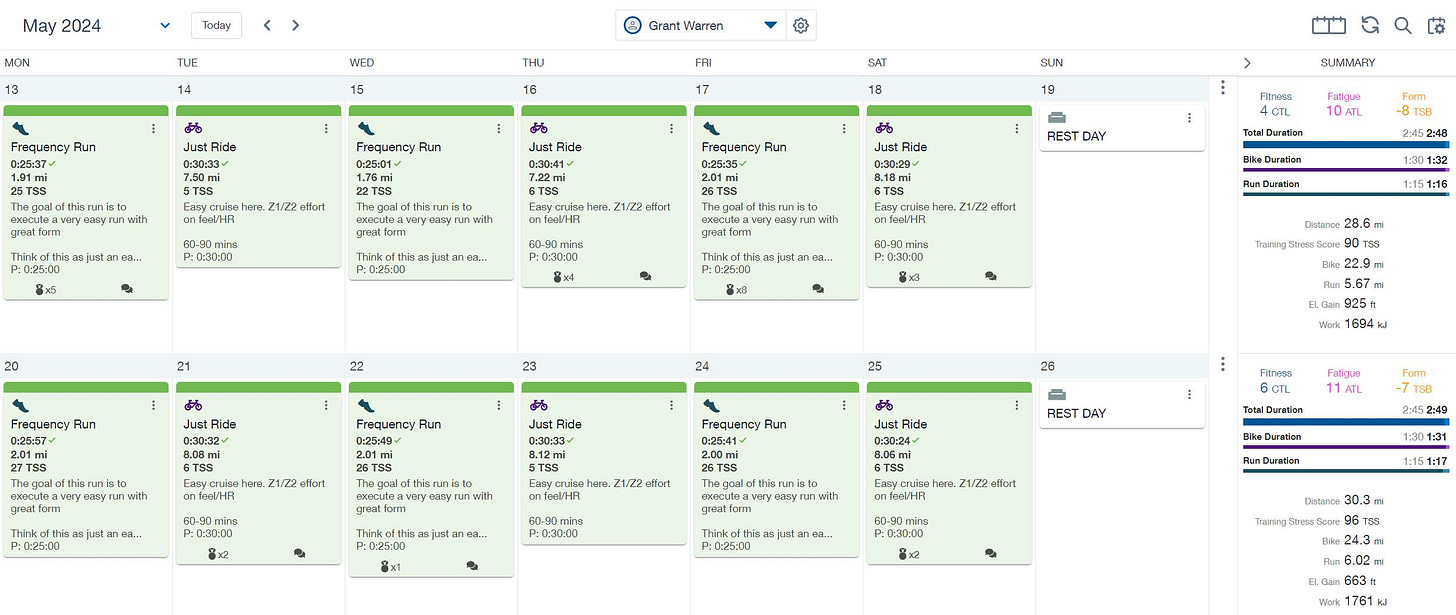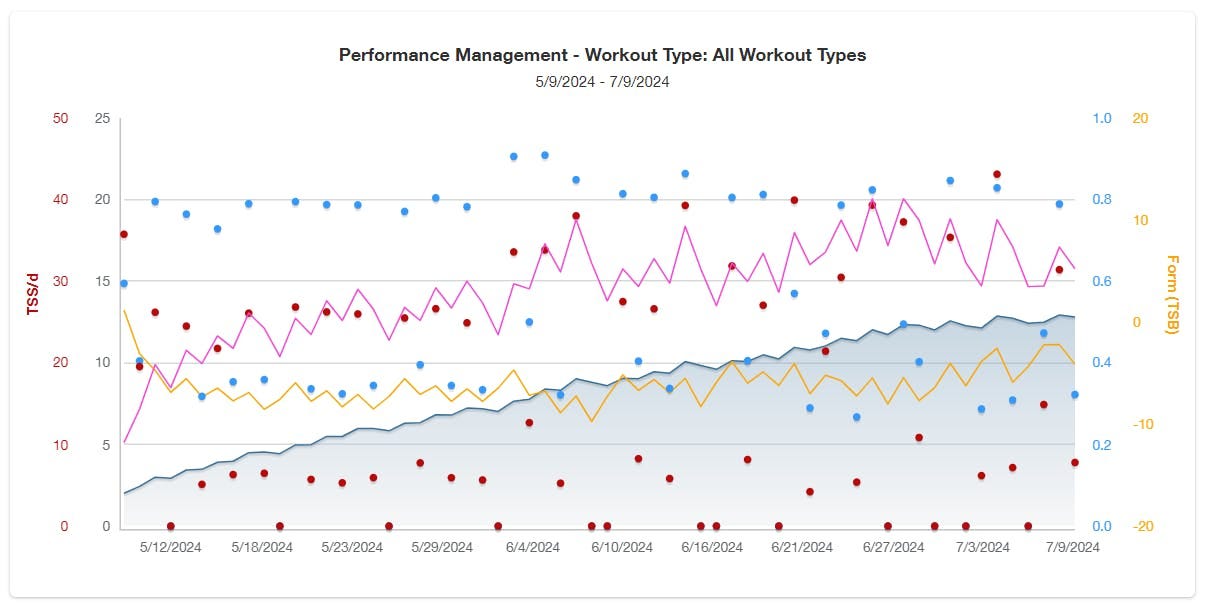Lower The Bar, Raise The Execution
How to become an execution machine
One of the hardest parts of becoming an endurance athlete is building momentum in training.
And 99% of beginner endurance athletes fall victim to the same problem:
Too much, too soon.
Knowing how to piece together a training week with a busy life as a parent isn’t easy.
But what experienced endurance athletes have figured out is once you create a system for daily training - executing becomes effortless.
In fact, most beginners don't realize that every "endurance athlete" they see training isn't waking up every morning filled with the desire to train.
Instead, they've built the skill of biting off what they can chew.
Even guys inside Tribal fall into the trap of too much, too soon.
Which is tricky because a lot of people who gravitate to endurance have an "all or nothing" mindset.
They like extremes. They want to chase the big thing.
And there can be lots of upsides to harnessing that approach to life.
But when it goes unchecked (and early in the training process), I've consistently seen it lead to burnout and frustration.
And after coaching over 100 athletes across endurance finish lines, I've found that there's a better way...
Lower The Bar, Raise The Execution
My athlete Grant is a perfect example.
Grant joined Tribal and had goals to take on a 70.3 (half Ironman).
But not just one 70.3...
He wanted to do 2x 70.3s within first 6 months of starting.
I liked the ambition (and I had coached guys to 70.3s in less time), so I didn't talk him out of it.
But we ran into problems right away...
He didn't have a consistent exercise habit in place
We didn't build systems to make endurance training simple
I over-programmed him with 45 minute runs, 2,700 yard swims and 90 minute rides
And guess what happened next...
He missed workouts
He felt like he was always playing "catch up"
He got burnt out and decided to pause on training
It felt like we both failed. And that sucked.
But we both still had hope.
We knew that if we were going to find success together, we'd just need a different approach.
Two months later, we regrouped and built a new plan.
What happened next changed everything...
We punted on the races and I made my biggest programming adjustment ever as a coach.
I capped every session at 30 minutes.
I had never done that before. And I had doubts that it would be enough for him to make progress.
But then something remarkable happened.
After missing workout after workout during our first stint, Grant didn't miss a workout for 2 straight months.
His plan consistently looked like this:
And his fitness chart (which tracks HR, speed and power) was following right along side it.
But even better than that, he built confidence.
He learned simple systems that made it easy to become consistent.
And he started to feel more capable.
Well just last week, Grant went on his first 50+ mile ride.
He said it felt amazing to create an experience/accomplishment and to "bash negative self belief".
I said hell ya to that.
He said it never would have been possible without the momentum we built by lowering the bar and raising the execution.
Tactical Coaching Tips:
The most basic triathlon split is 2 rides, 2 runs and 2 swims per week.
Instead of chasing what you think you can do in each training session, lower the bar to what you know you can do.
And just execute.
Do it for 4 straight weeks, then reassess where you're at.
My recommendation:
30 minute runs
40 minute rides
20 minute swims
The sub-1 hour time blocks will make logistics easier to manage (I'll have more tips for that later in the course).
And if you can execute that volume with ease, go ahead and add more.
But only if you're consistent with 2 rides, 2 runs, 2 swims per week.
There you have it - the formula to build momentum through consistency:
Lower the bar, raise the execution.



